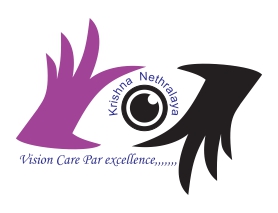Home > Low vision aids
Exploring multiple possibilities with low vision aids
Low vision immensely affects a normal lifestyle. It hinders the everyday activities of an individual. Using lower vision aids enhances the quality of the remaining vision and helps an individual lead life independently.


This page will highlight the causes and problems of low vision and the devices that can help to improve lower vision problems. Poor eyesight creates a lot of hindrances in the daily lifestyle. Individuals with low vision find difficulty in performing day-to-day activities that might have a huge impact on their life. They feel inferior to others and often suffer from low self-esteem.
The cause of poor eyesight can be attributed to eye diseases. Certain diseases damage eyesight and affect the normal functioning of the eyes. The problem of low vision may not be eradicated even after wearing glasses or contact lenses. Neither can medicines or eye surgery solve the problem. In such situations, low-vision aids are recommended for patients who are detected with poor eyesight.
Low vision aids ensure that the patients can perform their daily tasks without much hindrance. They help the patients to become self-dependent and regain self-confidence. Modern-day medical science has led to the invention of devices that helps patients to overcome problems related to poor eyesight. Our experts will examine and treat your lower vision problems and recommend you the appropriate low-vision aids suited for your daily needs.
Some of the causes of low vision can be attributed to the following:
These aids are designed to suit the requirements of people having poor eyesight. They are worn as spectacles that increase the power of the eye to help people read, write or indulge in activities like stitching.
These devices are placed on the object that a person wants to read. Lights are fitted inside the device, which makes it easy to use.
Telescopes can either be attached to the spectacles or can separately be used as binoculars. They help people to see objects placed in a distant position.
It is an electronic device that increases the size of words or images so that they are clearly visible. Smartphones and tablets are the most commonly used video magnifiers in the modern world.
Experts perform various eye examinations for identifying and detecting poor eyesight. Through eye tests and visual field tests, experts diagnose the extent to which the functions of your eyes are affected.
Low vision aids act as a support system for reading and writing activities. With these devices, the existing vision is enhanced so that daily activities can be performed without much hindrance.
Poor or low lights act as a hindrance for people with poor eyesight. Bright and proper arrangement of light can help people with poor sight immensely in performing their required tasks.
The commonly known non-electrical aids are telescopic glasses or magnifiers. They can be easily used and provides effective solutions to enhance low vision.
An electronic magnifier makes texts and pictures larger using cameras or screens. These devices are designed with customizable setting options beneficial for individual needs.
It is not possible to regain complete vision using low-vision aids. The functions of these tools are to enhance the remaining eyesight so that they can independently perform their day-to-day activities.
A screen reader is beneficial as it reads the displayed texts on computers or any screen loudly. They help individuals with poor eyesight to access applications and digital texts.
It is better to consult a specialist before buying low-vision devices. An expert will be able to guide you toward buying the device suitable for your present eye condition.
Constantly motivate your grandfather to visit ophthalmologists for regular consultation. Encourage him to take help from therapists and take part in awareness programs. Advise him to take the help of low vision devices to perform his everyday activities independently.
The costs of the devices usually vary depending upon the features of the device or the brands of the device. If the price is making you worried, search for governmental or non-governmental organizations that provide financial help for buying the devices.
Stay connected with the latest advancements in eye care and receive exclusive insights by subscribing to our informative newsletter

Discover unparalleled eye care at the best eye hospital in Yelahanka. Our renowned facility, led by the best eye doctors in Yelahanka, is dedicated to preserving your vision and enhancing your ocular well-being.
Copyright © 2022. All rights reserved by krishna nethralaya